‘Demon 79’ explained: How Season 6’s final episode fits into ‘Black Mirror’
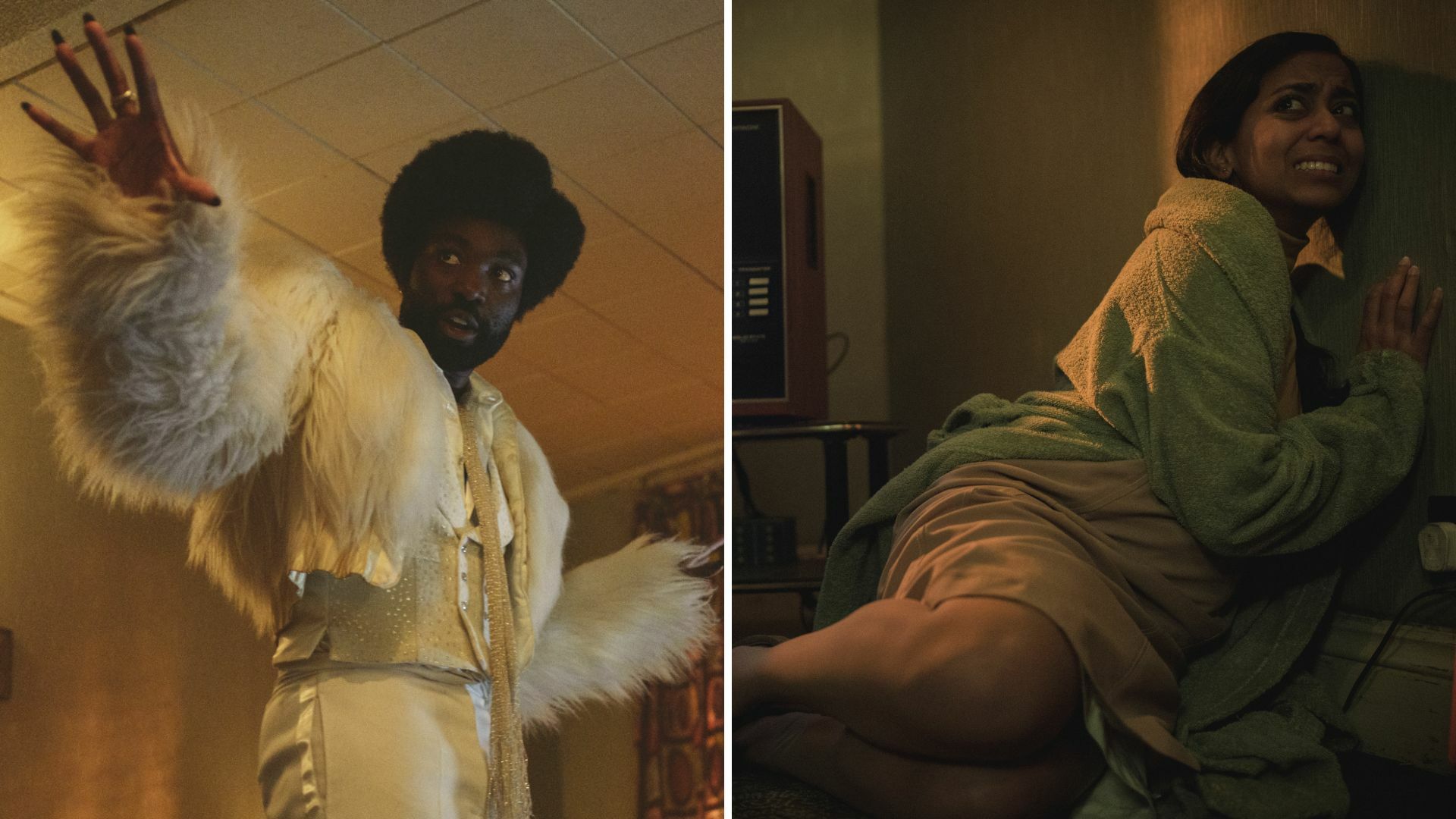
Black Mirror Season 6 throws a lot of wild new elements at fans. Charlie Booker dives into true crime, fantasy, horror, and even meta-commentary about Netflix itself. Yet few of us might have been prepared for “Demon 79,” an episode that could be utterly confounding if you’re not paying close attention.
Whether you were watching the new ep while folding laundry or got distracted by the kids or even a black mirror of your own, we’ve got you covered. Let’s run down the details of “Demon 79” to unearth all its clues and what they all mean.
Is “Demon 79” part of Black Mirror canon?
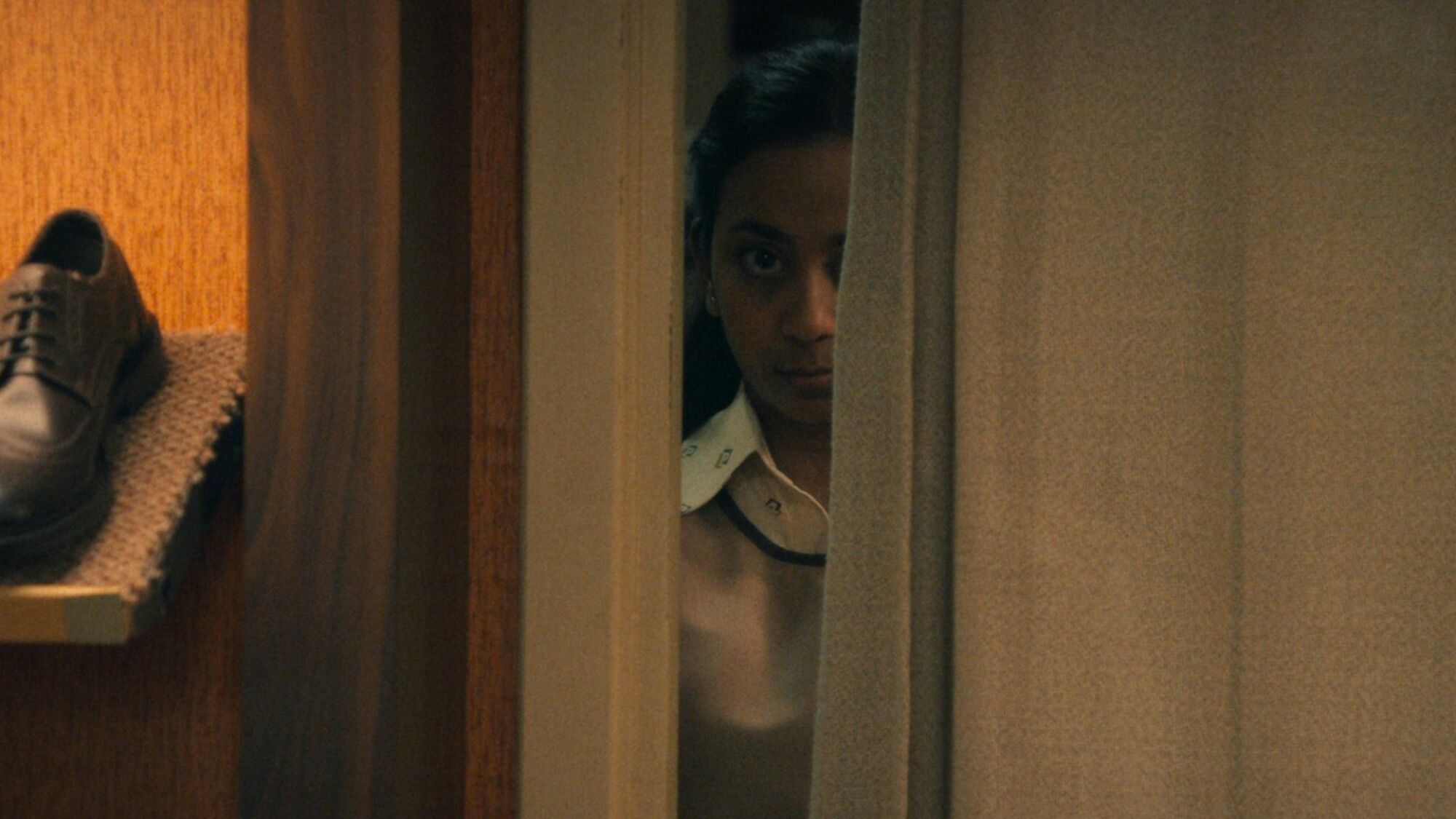
Much of Black Mirror‘s anthology episodes happen within the same world, with props, characters, and incidents being mentioned across otherwise unconnected stories. Season 6’s version of Netflix, Streamberry, has several Easter Eggs referencing past episodes, including “The National Anthem” and “Bandersnatch.” In “Demon 79,” Nida (We Are Lady Parts‘ Anjana Vasan) is given a glimpse of a dystopian future that includes the vicious robotic dogs from “Metalhead.” That could suggest her story happens in the same world as “Joan Is Awful,” “Loch Henry,” and the rest. And it does, just not on in the same way as the others.
At the start of “Demon 79,” an ominous orchestral score plays over opening titles cards with a bold red font; they have the flare of ’70s horror movies, calling to mind Let’s Scare Jessica to Death or Last House on the Left. Among these titles cards is one that reads “A Red Mirror film.”
It was a clue teased in the season’s trailer too. “Demon 79” isn’t a story in the same timeline as the bulk of the series, which is perhaps no surprise considering it’s set in the ’70s and ends with a pretty seismic conclusion. Instead, this is a movie that exists within the world of Black Mirror. Maybe it’s better home viewing for Joan and her partner than the show all about her, right? It’s certainly more romantic. Or…is it?
Is Nida delusional or on a real, righteous mission in “Demon 79”?
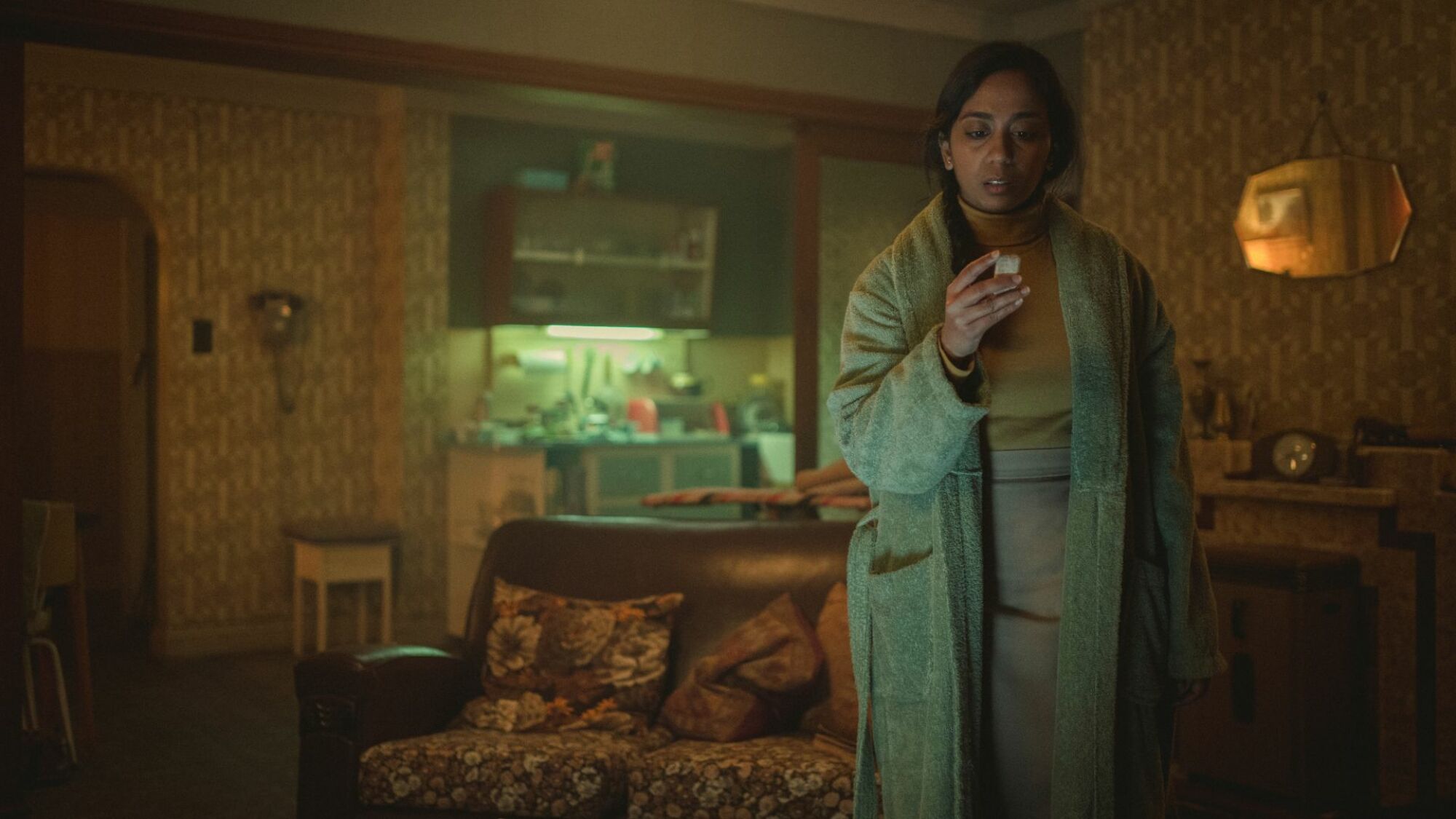
Written by Bisha K. Ali and Charlie Brooker, “Demon 79” centers on a mild-mannered sales clerk in 1979 London. As an Indian woman in a predominantly white neighborhood, Nida stands out, whether she wants to or not. Racist neighbors shoot her side-eye. A skinhead marks her door with menacing “NF” graffiti, indicating the far-right political party favored by her snarling co-worker, Vicky (Katherine Rose Morley). This is the same co-worker who complains about the smells of Nida’s biryani lunch, forcing her to eat in the department store’s forgotten basement.
It’s no wonder that Nida has visions of smashing Vicky’s head through the plate glass countertop. Leaning into the ’70s horror aesthetic, director Toby Haynes set these scenes of imagined violence apart, bringing back that dramatic orchestral music from the opening and adding artificial scratches to the picture, as if audiences were watching a degraded film reel. But Nida gets a chance to live out her violent fantasies when she meets a demon called Gaap.
Lunch in the basement leads to Nida finding a small wooden talisman, etched with a symbol in red. (The Red Mirror, perhaps?) Accidentally anointing it with her blood, she summons Gaap (Men‘s Paapa Essiedu), who informs her that she must kill one person a day for three days or else the world will end on May Day. But is this real — meaning real within the world of Black Mirror‘s movie’s reality? Or is this all in Nida’s head?
Let’s consider each side.
“Demon 79”: It’s all Nida’s delusion
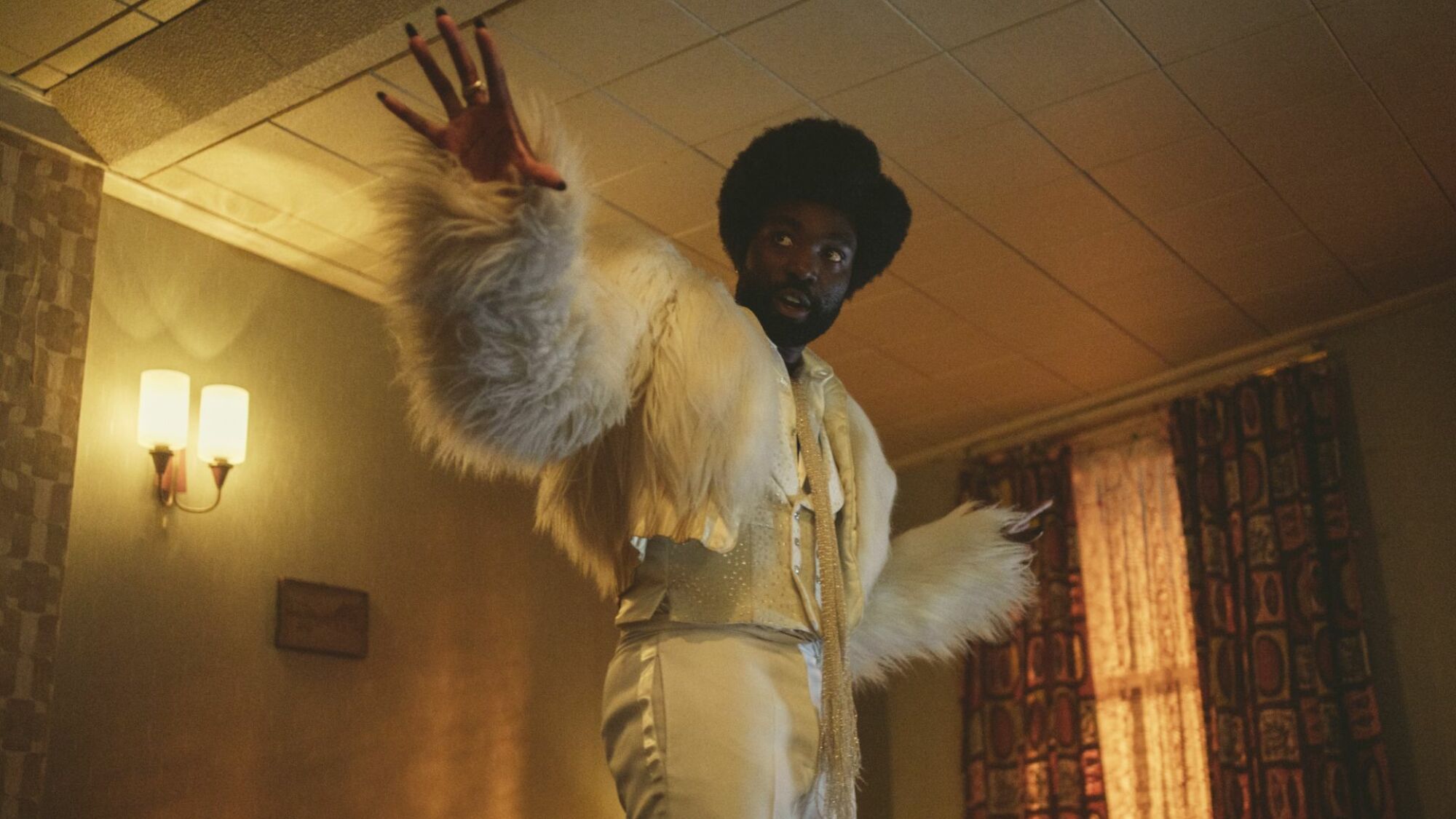
Before Gaap shows up, Nida is already thirsting for blood, imagining in detail how she’d attack those who cross her, including notorious wife-murderer (or man-slaughterer?) Keith Holligan. Maybe Nida, who’s been desperately isolated since the death of her mother, is so overcome with rage and loneliness that she creates an imaginary friend to give her companionship, purpose, and an excuse to lash out at the ruthless world around her.
Gaap’s appearance lends credence to this idea. Sure, at first, he’s a scary-looking demon like you might imagine. But then he reads her mind and becomes the flashy disco king of Boney M., the band behind the unfairly catchy jam “Rasputin.” He is her sexual fantasy and her sinister fantasy. Plus, when she’s out and about talking to her demon buddy, no one else can see him.
Now, Gaap does show her visions of a possible future. Fire engulfs her flat as nuclear war rages outdoors, previewing what will come on May Day if she doesn’t kill three people. If she spares the white supremacist politician Michael Smart (David Shields), his rise to power will include racist violence, fascism, and the aforementioned metalheads. If this were set in the Black Mirror universe, the inclusion of the robot dogs would be a great argument for these visions being real. But this is a movie within this universe, meaning it could have been produced after the creepy robo-critters were already on the prowl.
Nida’s shown reading a book earlier in the episode, before Gaap shows up, that could also be a clue. After a bad day at work, she’s eating chips at home while reading Creative Visualization: Use the Power of Your Imagination to Create What You Want in Your Life by Shakti Gawain and Marci Shimoff. Published in 1978, the book aimed to educate people on the cognitive process of generating mental imagery to change how you feel about the world around you. So, this could be what Nida is doing — using this self-help book to help herself make the world a better place, as she sees it anyway.
In the third act, Nida’s perception is challenged under police interrogation. As she confesses, her narrative seems absurd. “They said Keith doesn’t count,” she tells the two patient officers, “but that wasn’t fair.” Then they present her with her so-called talisman. The blood-red ruin on it is gone now. “It’s gone normal now,” she laments, holding in her hand a domino. She waits for midnight, when May Day will bring the end of the world, but nothing happens. (Yet.)
The cops leave the room, feeling this is an open-and-shut case. A young woman, pressured by the racism around her and ongoing news reports of nuclear threat, snapped and went on a killing spree. “Her mind’s gone, that’s for sure,” says the senior officer. And then nuclear annihilation hits.
In this reading, Nida retreats from the oncoming hell into her mind, reconnecting with her literal dream man (and personal demon) to embrace oblivion together. Her inability to complete Gaap’s commands ultimately had no bearing on the impending nuclear war. More likely, her intuition told her the end was near.
“Demon 79”: It’s all real
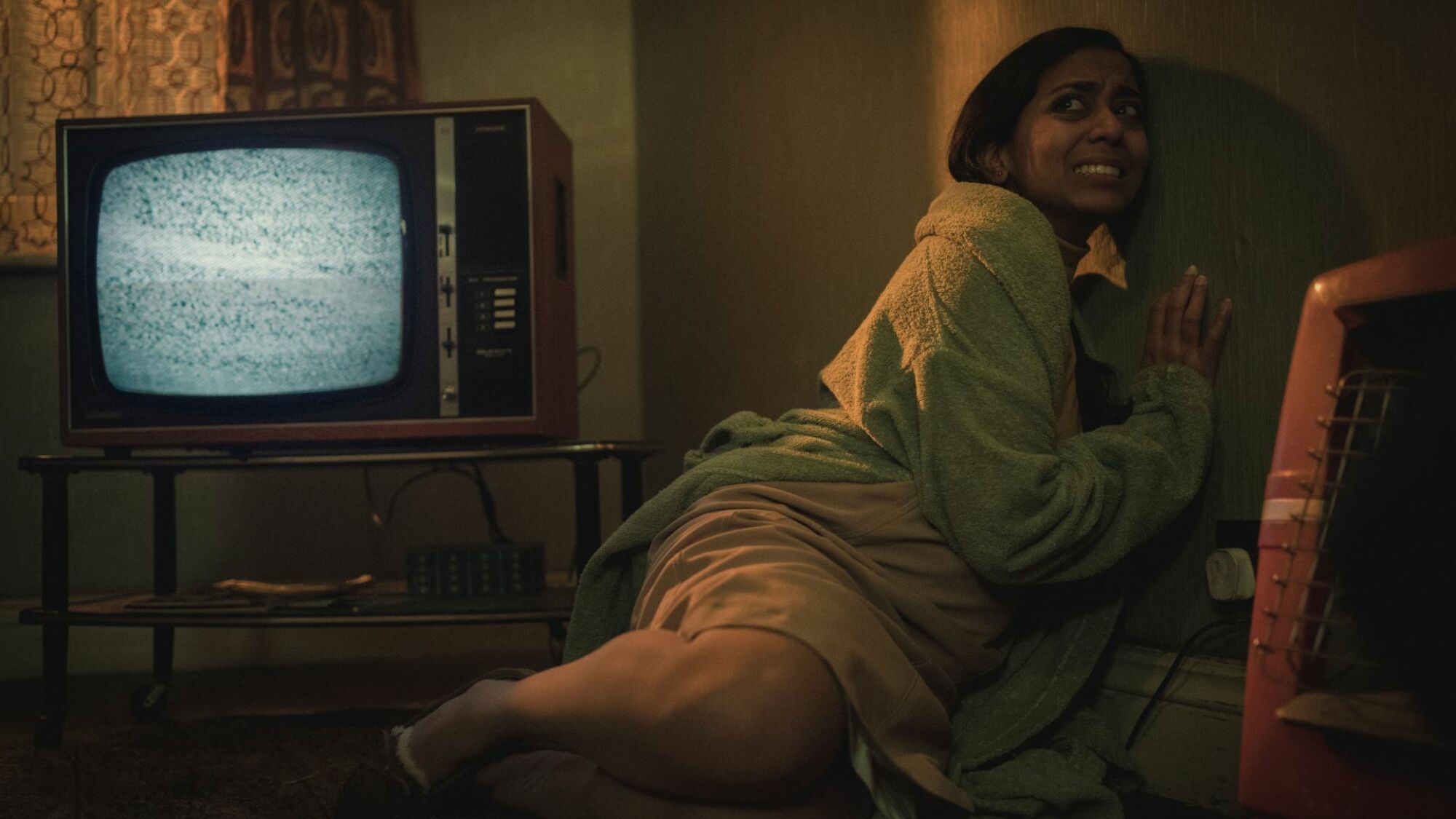
Nida’s violent fantasies aren’t proof that she’s making everything up. They are actually why the demon calls to her. Gaap explains she had to be corruptible for the curse to take hold. Notably, her imagined attacks against others are set apart in music and visual noise, but her scenes with Gaap and her homicides have neither.
Even before they meet, the Red Mirror movie gives hints that this deal-with-a-demon has happened before. Mr. Geophrey Possette was the owner of the department store Nida now works in, and his basement office is where Nida finds the talisman. But that’s not all she finds. Eating her lunch at his abandoned desk, she sees four important news clippings, yellow and weathered with age.
Their headlines read:
“Publican Dies In Blaze”
“Workman Crushed By Collapsing Wall”
“Woman’s Disappearance Confounds Police”
“May Day Celebration ‘Grand Success'”
Pieced together with her own story, this suggests that Possette was also propositioned by a demon. Presumably, Posette killed three people and lived to see the May Day that would have spelled doom without those sacrificial deaths. It’s after this discovery that Nida opens a little drawer on the desk and finds the talisman with its sigil; she fatefully cuts her finger on the rough metal drawer handle, accidentally anointing the relic with her own blood. (Gaap identifies the talisman as being from 1926.)
Further proof that Gaap is real and is telling her the truth (mostly) seems confirmed by the police investigation into the first victim’s demise. Gaap tells Nida that the man walking his dog has been molesting his young daughter Laura at night. When the cops go to speak to the missing man’s wife, she introduces a haunted-looking little girl named Laura. Nida gets this confirmation herself when the child and her mother come to buy shoes for the funeral. “Happy it’s finished, sad he’s dead,” Gaap says of the girl’s unspoken emotional state. He goes on to tell her that Laura would grow up and get past this trauma. Well, she would have if not for the whole world-ending thing.
Despite her rage and her certainty that the world would be better off without Michael Smart, Nida can’t bring herself to kill him and complete her quest. This means nuclear war is imminent, fated for May Day. Gaap will be outcast from the demon’s realm to an infinite void outside of existence. “Eternal oblivion,” he tells Nida as air horns blare a warning in the background. Then, he offers to take her with him. A loophole — she can join him as the rules say nothing about a human companion.
The final proof that Gaap is real is a double whammy: A nuclear bomb hits London, turning the once-glorious metropolis into an explosion of flame and flesh, as promised. But while the police station around them is engulfed, Nida and her demon lover stroll confidently into oblivion to spend eternity together.
So, is Nida’s deal with her devil real or a delusion? Romantic or demented? What did you make of “Demon 79”?
How to watch: Black Mirror Season 6 is now on Netflix.

